In Vitro Fertilization for Polycystic Ovarian Syndrome and Infertility
IVF Success Rates with PCOS
PCOS and IVF Success
The large majority of women with PCOS, polycystic ovarian syndrome, that have not gotten pregnant with other treatments will be able to get pregnant and have a baby with IVF (in vitro fertilization) if they are under 40 and do their IVF at a high quality clinic.
IVF clinics are not all the same – learn more about IVF pregnancy success rates.
Controlling Multiple Pregnancy Risks with PCOS
- Using injectable gonadotropins to treat PCOS infertility has a high risk for high-order multiple pregnancy (triplets and higher). The level of risk is unacceptable for some couples
- Recent advances in IVF technologies have resulted in the ability to maintain high pregnancy rates while controlling multiple pregnancy risk
- Blastocyst embryo transfer is a variant of the standard IVF treatment that is useful in controlling multiple birth rates
Our IVF PCOS Success Rates and Statistics
- In general, IVF success rates are excellent for cases with infertility caused by PCOS
- In our in vitro fertilization program we see PCOS pregnancy statistics of about 60% for a live birth rate per egg retrieval (woman under age 35). This is dependent on several factors including whether one or two embryos are transferred to the uterus.
- We have had many PCOS IVF success stories…
- See our IVF live birth success rates
IVF Protocols for PCOS
We specialize in treating women with PCOS and have 2 IVF stimulation protocols that we commonly use with PCOS:
- Ganirelix with Lupron trigger protocol – this is what we currently use in order to avoid ovarian hyperstimulation syndrome.
- PCOS down-regulation protocol (below)
The down-regulation PCOS IVF protocol combines:
- Metformin
- Oral contraceptive pills
- Lupron down-regulation ovarian stimulation protocol
The calendar below shows the down-regulation protocol for PCOS
-
- We use metformin, usually at a dose of 500mg 3 times daily for at least a month before starting Lupron
-
- Then, oral contraceptive pills for about 21 days (last 4 days of OCP shown on calendar)
-
- Lupron overlaps with the last 3 birth control pills
-
- Ovarian stimulation starts after 6 or 7 “pill free” days
-
- Careful control of the dose of injectable FSH hormone and cautious monitoring of the ovarian response is important with polycystic ovary cases
- We do our very best to avoid over-responding, which can result in ovarian hyperstimulation syndrome
| Sunday | Monday | Tuesday | Wednesday | Thursday | Friday | Saturday |
|---|---|---|---|---|---|---|
| 1 OCP |
2 OCP/Lupron |
3 OCP/Lupron |
4 OCP/Lupron |
5 Lupron |
6 Lupron |
7 Lupron |
| 8 Lupron |
9 Lupron |
10 Lupron |
11 LupronStart of ovarian stimulation Day 1 of stim |
12 LupronDay 2 of stim |
13 LupronDay 3 of stim |
14 LupronDay 4 of stim |
| 15 LupronDay 5 of stim |
16 LupronDay 6 of stim |
17 LupronDay 7 of stim |
18 LupronDay 8 of stim |
19 LupronDay 9 of stim |
20 HCG injectionDay 10 of stim |
21 |
| 22 Egg RetrievalDay of fertilization |
23 | 24 | 25 Day 3 Transfer |
26 | 27 Day 5 Transfer |
28 |
Key to table:
- Lupron = subcutaneous injection of a medication called Lupron (GnRH agonist). This medication is taken once daily
- HCG injection = injection of a medication called HCG, which causes the eggs to complete maturation. This is taken only once in the cycle.
- Egg retrieval procedure = the procedure that gets eggs from the ovaries
- Embryo transfer procedure = the procedure putting embryos back in the uterus
- Most women need 4 to 6 visits for monitoring the stimulation (not shown on this calendar) before they get the HCG trigger shot
- The duration of the ovarian stimulation process can be shorter or longer than shown. This example shows 10 days of stimulation before the HCG trigger
- The average number of days of stimulation is 9-10, with a range of 7 to 14 days










